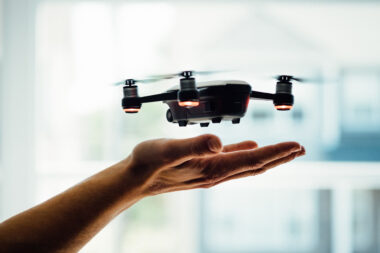Introduction
Traditional batteries present significant environmental and logistical challenges, including limited lifespan, hazardous material disposal, and resource intensive production. Battery free electronics mitigate these issues by integrating self-sustaining power systems that draw energy from ambient sources. The development of energy efficient microelectronics and advanced energy harvesting methods enables a new generation of devices that operate without conventional batteries.
Principles of Battery Free Electronics
- Energy Harvesting
- Converts ambient energy (solar, RF, thermal, kinetic) into usable electrical power.
- Reduces dependency on traditional power storage mechanisms.
- Utilizes multi source energy harvesting, combining multiple energy inputs for improved efficiency.
- Ultra Low Power Circuit Design
- Optimizes energy consumption through efficient processing and minimal power loss.
- Incorporates dynamic voltage scaling and power gating techniques to minimize standby power.
- Uses sub threshold logic design, allowing circuits to operate at voltages below conventional thresholds, significantly reducing energy demands.
- Wireless Energy Transfer
- Enables remote power delivery using RF and inductive coupling.
- Enhances mobility and usability of battery free systems.
- Utilizes resonant inductive coupling, ensuring high efficiency power transfer across moderate distances.
- Intermittent Computing
- Ensures data retention and system continuity during energy fluctuations.
- Utilizes non volatile memory (FRAM, MRAM, ReRAM) to maintain state even when power is lost.
- Implements energy aware task scheduling, ensuring computation occurs only when sufficient energy is available.
- Adaptive Power Management
- Employs AI driven energy optimization algorithms to dynamically adjust power consumption.
- Incorporates load balancing circuits that distribute harvested energy efficiently across different system components.
- Uses supercapacitor buffering, preventing sudden drops in power availability.
Technical Components of Battery Free Electronics
1. Energy Harvesting Technologies
- Photovoltaic Energy Harvesting: Micro scale solar cells capture ambient light energy for direct conversion into electrical power.
- RF Energy Harvesting: Antennas capture electromagnetic waves from Wi Fi, Bluetooth, or cellular signals to generate energy.
- Piezoelectric and Kinetic Energy Harvesting: Converts mechanical vibrations or movements into electrical energy.
- Thermoelectric Harvesting: Uses temperature gradients to generate electricity through the Seebeck effect.
2. Ultra Low Power Microcontrollers and Circuitry
- Sub threshold Circuit Design: Operates transistors below threshold voltage to reduce power consumption.
- Asynchronous Processing Units: Reduce switching power loss by eliminating clocked operations.
- Non volatile Memory (FRAM, MRAM, ReRAM): Stores data with minimal power requirements, ensuring efficient energy usage.
3. Wireless Power Transmission
- RF Power Transfer: Uses electromagnetic waves to wirelessly charge ultra low power devices.
- Inductive and Resonant Coupling: Transfers energy wirelessly over short distances, commonly used in passive RFID and NFC systems.
- Capacitive Coupling: Transfers energy through electric fields, applicable in touch interfaces and medical implants.
4. Power Management and Energy Storage
- Supercapacitors: Provide short term energy storage with rapid charge discharge cycles.
- Energy Adaptive Power Regulators: Dynamically adjust power flow to match harvested energy input and device consumption.
Working Principle of Battery-Free Electronics
Battery free electronics function by harvesting ambient energy, processing it efficiently, and utilizing it to power electronic components. The working process can be broken down into the following key stages:
- Energy Harvesting and Conversion
- Solar Harvesting: Photovoltaic cells capture light energy and convert it into electrical power.
- RF Harvesting: Antennas absorb electromagnetic waves from Wi Fi, cellular signals, and radio frequencies, converting them into usable DC power.
- Kinetic and Piezoelectric Harvesting: Mechanical motion or vibrations generate electricity through piezoelectric materials.
- Thermoelectric Harvesting: Captures heat energy and converts it into electricity via temperature differentials.
- Energy Storage and Regulation
- Harvested energy is first stored in supercapacitors or ultra low leakage capacitors, providing temporary energy storage.
- Power management ICs regulate the energy flow, ensuring consistent voltage levels for electronic circuits.
- Dynamic voltage scaling (DVS) adjusts processing power based on available energy levels.
- Efficient Circuit Operation
- Ultra low power microcontrollers optimize processing efficiency, enabling intermittent computation when energy supply fluctuates.
- Power gating and clock gating techniques ensure that only necessary components remain active, reducing power consumption.
- Non volatile memory (FRAM, MRAM, ReRAM) allows data storage without continuous power supply, enabling energy efficient operation.
- Wireless Power Transfer (Optional in Certain Designs)
- Devices requiring continuous operation integrate RF power transfer or inductive coupling to receive power wirelessly.
- Capacitive coupling is used in specialized medical applications for non contact energy transfer.
- Intermittent Computing and Adaptive Operation
- When power availability fluctuates, intermittent computing frameworks store system states and resume execution seamlessly once energy is restored.
- Adaptive task scheduling prioritizes critical operations when energy is abundant and enters low power states when energy is limited.
Implementation Methodology
Step 1: Energy Source Identification and Optimization
- Evaluate ambient energy availability (light, motion, RF, heat) based on application environment.
- Design hybrid energy harvesting systems for multiple energy sources.
Step 2: Circuit Design for Low Power Consumption
- Implement ultra low power microcontrollers with power gating and dynamic frequency scaling.
- Use energy efficient analog digital conversion techniques to reduce power overhead.
Step 3: Wireless Energy Transfer Integration
- Optimize RF energy capture antennas for maximum power efficiency.
- Design inductive or capacitive coupling circuits for seamless power transfer.
Step 4: Storage and Power Regulation
- Implement ultra low leakage capacitors for temporary energy buffering.
- Develop adaptive voltage regulators for efficient power management.
Step 5: System Optimization and Deployment
- Optimize software algorithms for intermittent power operation.
- Validate energy harvesting efficiency through simulation and real world testing.
Design Components, Techniques, and Technology Involved
1. Design Components
- Energy Harvesting Modules: Integrated solar panels, RF antennas, piezoelectric transducers.
- Ultra Low Power Processors: Microcontrollers optimized for energy efficiency (ARM Cortex-M, MSP430, etc.).
- Energy Storage Elements: Supercapacitors and microcapacitors for temporary power storage.
- Wireless Communication Modules: Bluetooth Low Energy (BLE), NFC, and LPWAN for data transfer.
2. Design Techniques
- Subthreshold Circuit Design: Allows circuits to function at extremely low voltages.
- Dynamic Power Scaling: Adjusts processing speed based on available energy.
- Intermittent Computing Frameworks: Ensures smooth operation despite power interruptions.
- Duty Cycling: Activates power-intensive components only when necessary.
3. Technologies Involved
- Energy Harvesting ICs: TI BQ25570, e-peas AEM10941 for power management.
- Ultra Low Power Sensors: MEMS based sensors that operate on minimal energy.
- Machine Learning for Power Optimization: AI driven algorithms that predict energy availability and optimize processing tasks accordingly.
- Advanced PCB Design: Flexible and printed circuit boards optimized for energy efficiency.
Advantages of Battery Free Electronics
- Environmental Sustainability
- Reduces reliance on lithium ion and other hazardous battery materials.
- Minimizes electronic waste (e-waste) by eliminating disposable batteries.
- Reduced Maintenance and Cost
- No need for battery replacements, reducing long term operational costs.
- Extends the lifespan of electronic devices, making them more cost effective.
- Compact and Lightweight Design
- Eliminates bulky battery compartments, enabling ultra-miniaturized devices.
- Ideal for wearable technology, medical implants, and IoT applications.
- Scalability and Integration with IoT
- Compatible with smart cities, industrial automation, and connected infrastructure.
- Allows seamless integration of self-sustaining IoT networks.
Conclusion
Battery free electronics present a transformative approach to energy sustainability by leveraging ambient energy sources and ultra low power systems. These innovations will enable the next generation of self sustaining IoT devices, wearables, medical implants, and smart infrastructure, reducing reliance on traditional batteries. With continuous advancements in energy harvesting, circuit design, and wireless power transmission, battery free electronics are set to revolutionize the future of consumer electronics and embedded systems.



